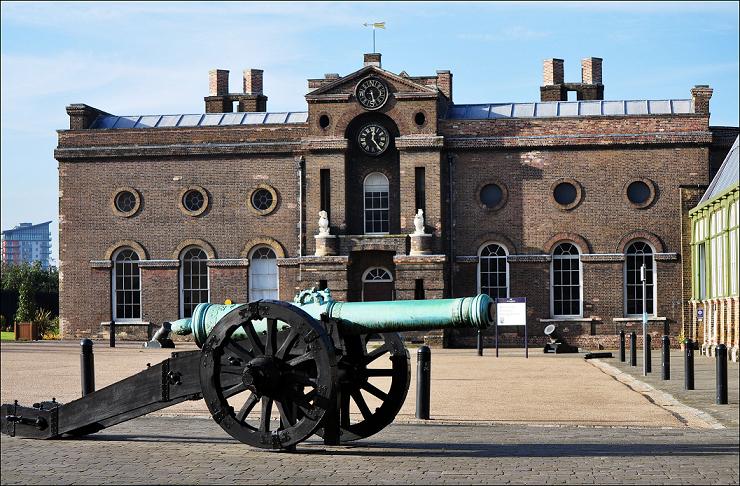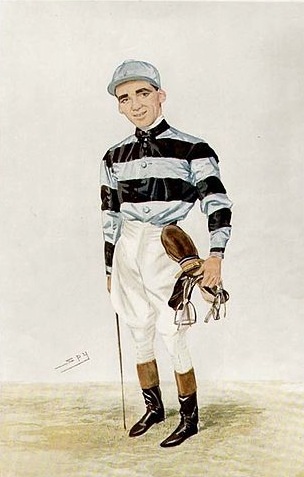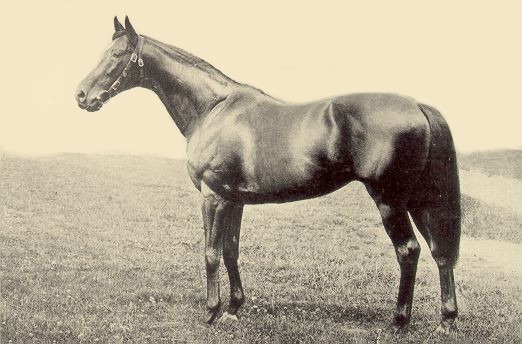|
Alfred W. Cox
Alfred William Cox (born Liverpool, England, 1857, died London, England 4 May 1919) was a racehorse owner and breeder. He was the son of a wealthy Scottish cotton broker, Alexander Robb Cox, and Margaret Lockhart Greenshields. His father Alexander was a director and partner in the firm of Cox, McEuon which dealt in jute, flax and hemp. The family bought the Hafod Elwy Estate in North Wales in 1864 for a holiday home and the estate remained in the possession of the family until 1987. About 1877 when Alfie failed to pass into The Royal Military Academy, Woolwich he was sent off to Australia where he tried his hand at farming. In 1881 he visited his uncle Henry Cox in Birkenhead. He was considered to be quite a determined person. In 1884, Alfie obtained a share in a mine at Broken Hill playing cards with George McCulloch. Following the discovery of silver he became a wealthy man and returned to London, where he indulged his love of horse racing as an owner and breeder, running his ... [...More Info...] [...Related Items...] OR: [Wikipedia] [Google] [Baidu] |
Alfred William Cox, Vanity Fair, 1910-06-29
Alfred may refer to: Arts and entertainment *''Alfred J. Kwak'', Dutch-German-Japanese anime television series *Alfred (Arne opera), ''Alfred'' (Arne opera), a 1740 masque by Thomas Arne *Alfred (Dvořák), ''Alfred'' (Dvořák), an 1870 opera by Antonín Dvořák *"Alfred (Interlude)" and "Alfred (Outro)", songs by Eminem from the 2020 album ''Music to Be Murdered By'' Business and organisations * Alfred, a radio station in Shaftesbury, England *Alfred Music, an American music publisher *Alfred University, New York, U.S. *The Alfred Hospital, a hospital in Melbourne, Australia People * Alfred (name) includes a list of people and fictional characters called Alfred * Alfred the Great (848/49 – 899), or Alfred I, a king of the West Saxons and of the Anglo-Saxons Places Antarctica * Mount Alfred (Antarctica) Australia * Alfredtown, New South Wales * County of Alfred, South Australia Canada * Alfred and Plantagenet, Ontario ** Alfred, Ontario, a community in Alfred and Plantag ... [...More Info...] [...Related Items...] OR: [Wikipedia] [Google] [Baidu] |
Royal Military Academy, Woolwich
The Royal Military Academy (RMA) at Woolwich, in south-east London, was a British Army military academy for the training of Officer (armed forces), commissioned officers of the Royal Artillery and Royal Engineers. It later also trained officers of the Royal Corps of Signals and other technical corps. RMA Woolwich was commonly known as "The Shop" because its first building was a converted workshop of the Royal Arsenal, Woolwich Arsenal. History Origins in the Royal Arsenal An attempt had been made by the Board of Ordnance in 1720 to set up an academy within its Arsenal (then known as the Warren) to provide training and education for prospective officers of its new Royal Regiment of Artillery, Regiment of Artillery and Corps of Royal Engineers, Corps of Engineers (both of which had been established there in 1716). A new building was being constructed in readiness for the Academy and funds had been secured, seemingly, through investment in the South Sea Company; but the latter's col ... [...More Info...] [...Related Items...] OR: [Wikipedia] [Google] [Baidu] |
Broken Hill
Broken Hill is a city in the Far West (New South Wales), far west region of outback New South Wales, Australia. An inland mining city, it is near the border with South Australia on the crossing of the Barrier Highway (A32) and the Silver City Highway (B79), in the Barrier Range. It is above sea level, with a cold semi-arid climate, and an average rainfall of . The closest major city is Mildura, to the south and the nearest State Capital City is Adelaide, the Capital (political), capital of South Australia, which is more than to the southwest and linked via route A32, the Barrier Highway. The town is prominent in Australia's mining, industrial relations and economic history after the discovery of silver-lead-zinc ore led to the opening of various mining, mines, thus establishing Broken Hill's recognition as a prosperous mining town well into the 1990s. Despite experiencing a slowing economic situation into the late 1990s and 2000s, Broken Hill itself was listed on the National ... [...More Info...] [...Related Items...] OR: [Wikipedia] [Google] [Baidu] |
George McCulloch (mine Owner)
George McCulloch (23 April 1848, in Glasgow – 12 December 1907, in London) was a Scottish businessman and art collector who was the mastermind behind the formation of the Broken Hill Mining Company, a precursor of BHP. He was the son of James McCulloch, a contractor, and Isabella Robertson, a farmer's daughter. George's father died of cholera in January 1849 when George was one year old, and he was brought up by his mother, who was assisted by his uncle John Robertson, a farmer. Early life and shipbuilding As a young man, circa 1865, McCulloch travelled to Uruguay, South America where his older brothers, John and Allan, were stockmen. At age 21, he returned to Glasgow and, in 1869, formed a partnership with James Patterson, leasing a shipyard at Port Glasgow. McCulloch Patterson and Co., shipbuilders, built several vessels, including the ''Isabel'', ''Vale of Doon'', ''Loch Dee'', ''Vale of Nith'', ''Firth of Clyde'', ''Maitland'', and the ''Loch Urr'', though they made a sm ... [...More Info...] [...Related Items...] OR: [Wikipedia] [Google] [Baidu] |
Lemberg (horse)
Lemberg (1907–1928) was a British Thoroughbred racehorse and sire. He won seventeen times in a career that lasted from 1909 until 1911, taking major races at two, three and four years of age. Lemberg won his most important victory as a three-year-old in 1910 when he won The Derby. His career was marked by his rivalries, first with the fast and precocious Neil Gow and later with the outstanding middle-distance runner Swynford. Lemberg went on to have a successful career at stud. Background Lemberg was bred by his owner Alfred W. Cox who raced his horses under the name of "Mr. Fairie". He was sired by Cyllene, an Ascot Gold Cup winner, who went on to become a highly successful stallion. In addition to Lemberg, he sired three other winners of The Derby and through his grandson, Phalaris, he is the direct male-line ancestor of most modern thoroughbreds. Lemberg's dam, Galicia was an outstanding broodmare. In the year before Lemberg's birth she produced Bayardo, the best Br ... [...More Info...] [...Related Items...] OR: [Wikipedia] [Google] [Baidu] |
Bayardo (horse)
Bayardo (1906–1917) was a British bred Thoroughbred horse racing, racehorse with an impressive record, both on the racecourse and at stud, where he was a leading sire. Background He was sired by Bay Ronald who won the Hardwicke Stakes and the City and Suburban Handicap. Bay Ronald sired Rondeau, who won nine stakes races, and was the dam of the influential stallion Teddy (horse), Teddy. He also sired Macdonald II, winner of the Prix Royal-Oak in France, and Dark Ronald, sire of Son-in-Law and Vaucluse, winner of the 1,000 Guineas Stakes. Bayardo's dam, Galicia, came from a good family which included having Blink Bonnie, as her fifth dam. Galicia was by Galopin—a Derby winner and sire St. Simon—and out of the Isonomy (horse), Isonomy mare, Isoletta. She won the Biennial Stakes as a two-year-old, before injuring her pastern. Galicia raced as a three-year-old, but broke down in the Derby Cup and was retired for breeding. She produced four winners, of 42 races and £88,000, in ... [...More Info...] [...Related Items...] OR: [Wikipedia] [Google] [Baidu] |
Gay Crusader
Gay Crusader (1914–14 September 1932) was a British Thoroughbred racehorse and sire who won a wartime version of the English Triple Crown in 1917. In a career which lasted from September 1916 to October 1917 he ran ten times and won eight races, including his last seven in succession. In addition to his three Classic wins he defeated older horses in the Newmarket Gold Cup and the Champion Stakes. Because of wartime restrictions, all of his races were at Newmarket Racecourse. After being injured in training in 1918 he was retired to stud, where his record was disappointing. Background Gay Crusader was a bay horse of "beautiful quality" bred by his owner Alfred W Cox, who used the name "Mr Fairie" for his racing interests. He was sired by Cox's stallion Bayardo, regarded as the best British racehorse of his time, and was the first foal of the mare Gay Laura, a daughter of Galeottia, who had won the 1000 Guineas for Cox in 1895. Gay Laura won a race as a two-year-old and was t ... [...More Info...] [...Related Items...] OR: [Wikipedia] [Google] [Baidu] |
Alexander Robb Cox
Alexander Robb Cox (6 August 1865 – 21 November 1950) was an English racehorse owner who also played first-class cricket whilst at university. Cox was born at West Derby in Liverpool in 1865, the son of Alexander Robb Cox and Margaret Lockhart Greenshields. His father was a wealthy textiles merchant from a family which was originally based in Dundee. The family purchased the Hafod Elwy Estate in North Wales in 1864, initially as a base for hunting, and Cox later lived at Tan Llan near Dolgellau.Courtenay Welch R (1901) ''The Harrow School Register, 1800-1911'', p. 562.Available onlineat The Internet Archive. Retrieved 2025-06-10.) Educated at Harrow School where he played in the cricket and association football teams, Cox went up to Trinity College, Cambridge after leaving school in 1884. He played two first-class cricket matches for Cambridge University Cricket Club, although he did not win a Blue. A wicket-keeper, he scored a total of six runs in the three innings in which h ... [...More Info...] [...Related Items...] OR: [Wikipedia] [Google] [Baidu] |
Seaforth Highlanders
The Seaforth Highlanders (Ross-shire Buffs, the Duke of Albany's) was a line infantry regiment of the British Army, mainly associated with large areas of the northern Highlands of Scotland. The regiment existed from 1881 to 1961, and saw service in World War I and World War II, along with many smaller conflicts. In 1961 the regiment was amalgamated with the Queen's Own Cameron Highlanders to form the Queen's Own Highlanders (Seaforth and Camerons), which merged, in 1994, with the Gordon Highlanders to form the Highlanders (Seaforth, Gordons and Camerons). This later joined the Royal Scots Borderers, the Black Watch, the Royal Highland Fusiliers and the Argyll and Sutherland Highlanders to create the present Royal Regiment of Scotland. History Formation The regiment was created in 1881 through the amalgamation of the 72nd (Duke of Albany's Own Highlanders) Regiment of Foot and the 78th (Highlanders) (Ross-shire Buffs) Regiment of Foot, which became the 1st and 2nd battalions of th ... [...More Info...] [...Related Items...] OR: [Wikipedia] [Google] [Baidu] |
Battle Of Magersfontein
The Battle of MagersfonteinSpelt incorrectly in various English texts as "Majersfontein", "Maaghersfontein" and "Maagersfontein". ( ) was fought on 11 December 1899, at Magersfontein, near Kimberley, Northern Cape, Kimberley, South Africa, on the borders of the British Cape Colony, Cape Colony and the independent republic of the Orange Free State (now in Sol Plaatje Local Municipality, Northern Cape). United Kingdom, British forces under Lieutenant General Paul Sanford Methuen, 3rd Baron Methuen, Lord Methuen were advancing north along the railway line from the Cape to relieve the siege of Kimberley, but their path was blocked at Magersfontein by a Boer force that was entrenched in the surrounding hills. The British had already fought a series of battles with the Boers, most recently at Battle of Modder River, Modder River, where the advance was temporarily halted. Lord Methuen failed to perform adequate reconnaissance in preparation for the impending battle and was unaware that ... [...More Info...] [...Related Items...] OR: [Wikipedia] [Google] [Baidu] |
Second Boer War
The Second Boer War (, , 11 October 189931 May 1902), also known as the Boer War, Transvaal War, Anglo–Boer War, or South African War, was a conflict fought between the British Empire and the two Boer republics (the South African Republic and Orange Free State) over Britain's influence in Southern Africa. The Witwatersrand Gold Rush caused a large influx of "Uitlander, foreigners" (''Uitlanders'') to the South African Republic (SAR), mostly British from the Cape Colony. As they, for fear of a hostile takeover of the SAR, were permitted to vote only after 14 years of residence, they protested to the British authorities in the Cape. Negotiations failed at the botched Bloemfontein Conference in June 1899. The conflict broke out in October after the British government decided to send 10,000 troops to South Africa. With a delay, this provoked a Boer and British ultimatum, and subsequent Boer Irregular military, irregulars and militia attacks on British colonial settlements in Natal ... [...More Info...] [...Related Items...] OR: [Wikipedia] [Google] [Baidu] |
Sudan Campaign
The Mahdist War (; 1881–1899) was fought between the Mahdist Sudanese, led by Muhammad Ahmad bin Abdullah, who had proclaimed himself the "Mahdi" of Islam (the "Guided One"), and the forces of the Khedivate of Egypt, initially, and later the forces of Britain. After four years, the Mahdist rebels overthrew the Ottoman-Egyptian administration with the fall of Khartoum and gained control over Sudan. The Mahdist State launched several unsuccessful invasions of their neighbours, expanding the scale of the conflict to also include the Italian Empire, the Congo Free State and the Ethiopian Empire. They also faced significant internal rebellion. Anglo-Egyptian forces reconquered Sudan in 1898 and the Mahdist state collapsed following defeat at the battle of Omdurman. The last organised resistance from the Mahdists ended the next year, leading to the creation of Anglo-Egyptian Sudan (1899–1956), a ''de jure'' condominium of the British Empire, and the Kingdom of Egypt, in which Br ... [...More Info...] [...Related Items...] OR: [Wikipedia] [Google] [Baidu] |







